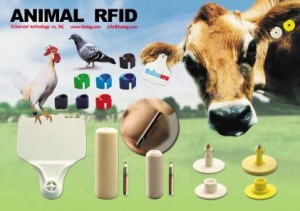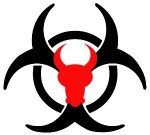Note: NAIS has won the award for 2009’s most DASTARDLY USDA IDEA. In Ag Sec Vilsack’s listening sessions, designed to find some common ground of appreciation for the USDA brain child, the bribe-riddled NAIS found accumulations of increasing retch with each of 16 town hall style meetings. Livestock people increased dislike with each interpretive spin from USDA. Although the livestock press, USDA state veterinarians and USDA universities defend full-blown NAIS, livestock producers were not willing to relinquish their meager profits for the red tape of a new government enforcement program.
When NAIS was not palatable federally, the USDA split the troops and provided over $150,000,000 in incentives for each state to take NAIS as a state enforcement project. When that costly idea slammed head-on to more resistance, in court and otherwise, now the USDA troops are dividing more. NAIS surveillance is becoming mandatory for certain disease studies. To try and forget the flawed thought of NAIS, new names are now being invented like “animal ID”, “information systems”, “food safety”, “animal health emergency management”, “animal security” and a host of other invented terms, just to sell the same old NAIS enforcement.
Beyond the millions spent to swallow NAIS, now many more millions are being spent to huddle government employees around new brain schemes to sugar-coat livestock surveillance enforcements. The article below is filled with costly processes that will be paid for by livestock owners and create more government jobs.
At a unique time in the history of agriculture production, when cost of goods are increasing, profits are reducing, the USDA is working at mach-speed to increase red tape and cost of doing business. Now, here it comes again, “One Health.”
NIAA meeting examines ‘One Health’
By Drovers news source | Monday, January 04, 2010
“One Health: Implications for Animal Agriculture” is the theme of the 2010 Annual Meeting of the National Institute for Animal Agriculture (NIAA), March 15-17 in Kansas City, Mo.
“One Health is a worldwide initiative focused on the interdependencies of human, animal and ecosystem health, and, with this concept comes significantly expanded roles and expectations placed on animal agriculture and professionals within animal agriculture,” states Dr. Tony Forshey, co-chair of NIAA’s Annual Meeting. “The general sessions and committee meetings at NIAA’s Annual Meeting will explore how the initiative may impact the various species and segments within production animal agriculture and animal health management.”
NIAA’s opening general session speakers will look at how the One Health initiative and strategies shift the focus from surveillance to intervention and prevention and how challenges need to be faced collectively rather than in individual silos and disciplines. The lineup of speakers will represent active members on the One Health Commission, representatives from the veterinary and human health community and representatives of animal agriculture.
NIAA’s 11 species-based and issue-based committees–which are open to NIAA members and non-members–will meet on Tuesday afternoon, March 16, and Wednesday, March 17. Issue-based committee meetings include animal care, animal health emergency management, animal health and international trade, animal production food safety and security, emerging diseases, and animal identification and information systems. Species-based committees include cattle, swine, poultry, equine, and sheep and goat. Each committee meeting features its own line-up of nationally recognized speakers.
“NIAA’s annual meeting is an ideal place for producers, animal health and management professionals, animal agriculture extension specialists and all of those involved in animal agriculture–cattle, swine, sheep, goats, poultry and equine–to gather and become better informed and involved regarding One Health,” Forshey adds.
A schedule of events for NIAA’s 2010 annual meeting, meeting registration, list of NIAA committees and hotel information are available at the NIAA Web site. Individuals are also welcome to call NIAA at (719) 538-8843 for information.



 One of the strongest speakers,
One of the strongest speakers,  The USDA has a
The USDA has a 